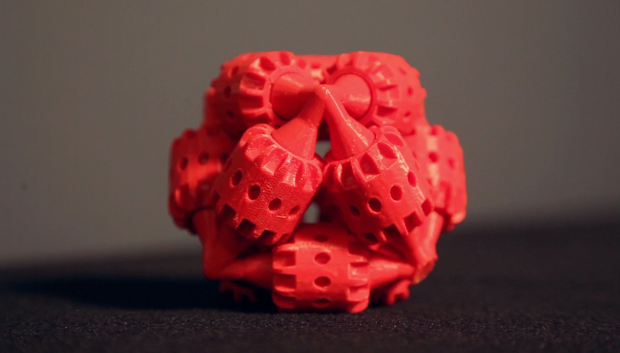New Study Tests the Hazards of 3D Printing

Latest News
February 10, 2016
With additive manufacturing (AM) closing in on three decades, it isn’t really accurate to call it a new technology. It is an evolving technology and recent years have seen a number of developments that have shaken up the status quo. One area of AM that has received less scrutiny is the potential dangers posed by 3D printing.
A new study conducted by the Illinois Institute of Technology, Ecole des Ingénieurs de la Ville de Paris, and the University of Texas at Austin examines the possibility of health risks posed by AM. Similar to previous studies, this paper looks at the materials used in AM and the potential for 3D printing to produce ultrafine particles (UFPs) and hazardous volatile organic compounds (VOCs).
 The material used to build this object could be hazardous to your health. Courtesy of America Makes.
The material used to build this object could be hazardous to your health. Courtesy of America Makes.The new study seeks to broaden knowledge about which AM systems, processes and materials can potentially be dangerous to operate. From the abstract:
It is well-known that both gases and particles are emitted during thermal processing of many thermoplastic materials. However, little is known about the types and magnitudes of emissions from desktop FFF 3D printers and how they vary according to filament material or printer characteristics.
Testing was conducted under conditions similar to those the research team expected to be the usual environment for desktop AM systems. The research space was a semi-enclosed area measuring 45 cubic meters, intended to represent the, “typical small well-mixed office environment.” Measurements were taken from the environment in general, rather than proximity to any particular AM system.
The study’s findings suggest that styrene UFPs, a known carcinogen, are produced in unhealthy quantities by AM systems using ABS filaments. It is possible, however, to reduce the amount of UFPs produced with the introduction of a fairly simple filtration system into the environment. Other suspect materials included Nylon, PCTPE, and imitation brick and wood filaments, which, while not necessarily carcinogenic, can still be hazardous if inhaled over extended periods.
In general, the study’s findings suggested common sense is still the best defense against potential risks. It’s not usually a good idea to melt plastic or fill the air with hazardous particles in any enclosed space, and an office is no exception. Well-ventilated areas and filters can provide protection against potential exposure.
The study is available online under the title “Emissions of Ultrafine Particles and Volatile Organic Compounds from Commercially Available Desktop Three-Dimensional Printers with Multiple Filaments.”
Source: ACS Publications
Subscribe to our FREE magazine, FREE email newsletters or both!
Latest News
About the Author
John NewmanJohn Newman is a Digital Engineering contributor who focuses on 3D printing. Contact him via [email protected] and read his posts on Rapid Ready Technology.
Follow DE





